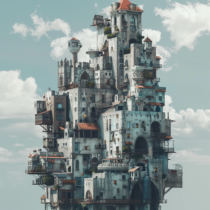World Building Questions: The Rules of Majick


World Building Questions: The Rules of Majick
WORLD BUILDING QUESTIONS:
- Where does majick come from: divine source, a tangible energy or resource, the personal will-power of the caster, et cetera?
- Is the source exhaustible?
- How does a caster tap into majickal energy?
- Does it require some rite of passage (investing one’s own energy or lifeforce into an object; divine selection or selection of some other kind; specific knowledge/education; creating, being given, or inheriting a permanent connection to the source/energy; successfully summoning a demon/angel/spirit/divine being/et cetera)? —OR— Does it just happen naturally because of study or as a part of growing up?
- What things can majick do? What can it not do? (i.e., what, if any, are the limitations?)
- How much is known about the laws of majick? How much of what is “known” is wrong?
- What does one need to do to cast a spell (an elaborate ritual, recite spell/poetry, combining the correct ingredients)?
- Are there objects like a staff, a wand, a familiar, or a crystal ball that are necessary or useful to have before casting spells?
- If so, where and how does obtain these objects?
- Can any wand be used by any wizard or are they wizard-specific?
- How long does it take to cast a spell? Can the spells be stored for later, instant use? Do spells take lots of long ritual, or is majick a “point and shoot” kind of thing?
- Can two or more wizards combine their power to cast a stronger spell, or is majick done only by individuals? What makes one wizard more powerful than another—knowledge of more spells, ability to handle greater quantities of energy, having a more powerful divine being as a patron, etc.?
- Does practicing majick have any detrimental effects on the wizard (such as being addictive, crippling/injuring, slowly driving the wizard insane, or shortening the wizard’s life-span)?
- If so, is there any way to prevent these effects? Are the effects inevitable in all wizards, or do they affect only those with some sort of predisposition? Do the effects progress at the same rate in everyone?
- What general varieties of majick are practiced (e.g., herbal potions, ritual majick, alchemical majick, demonology, necromancy, etc.)? Do any work better than others, or does only one variety actually work?
- Are certain kinds of majick practiced solely or chiefly by one sex or another? By one race or culture or another?
- Does a wizard’s majickal ability or power change over time—e.g., growing stronger or weaker during puberty, or with increasing age? Can a wizard deplete all of his/her majick, thus ceasing to be a wizard?
- Can the ability to do majick be lost? If so, how—overdoing it, majickal attack, depletion, et cetera?
- Can the ability to do majick be forcibly taken away? If so, how and by whom?
- What is the price wizards pay in order to be wizards—years of study, permanent celibacy, using up bits of their life or memory with each spell, a personal sacrifice (killing a family member—perhaps to absorb their majickal energy), a required daily or periodic sacrifice (say, to a demon), sacrifice/loss/depletion of beauty/looks, et cetera?





